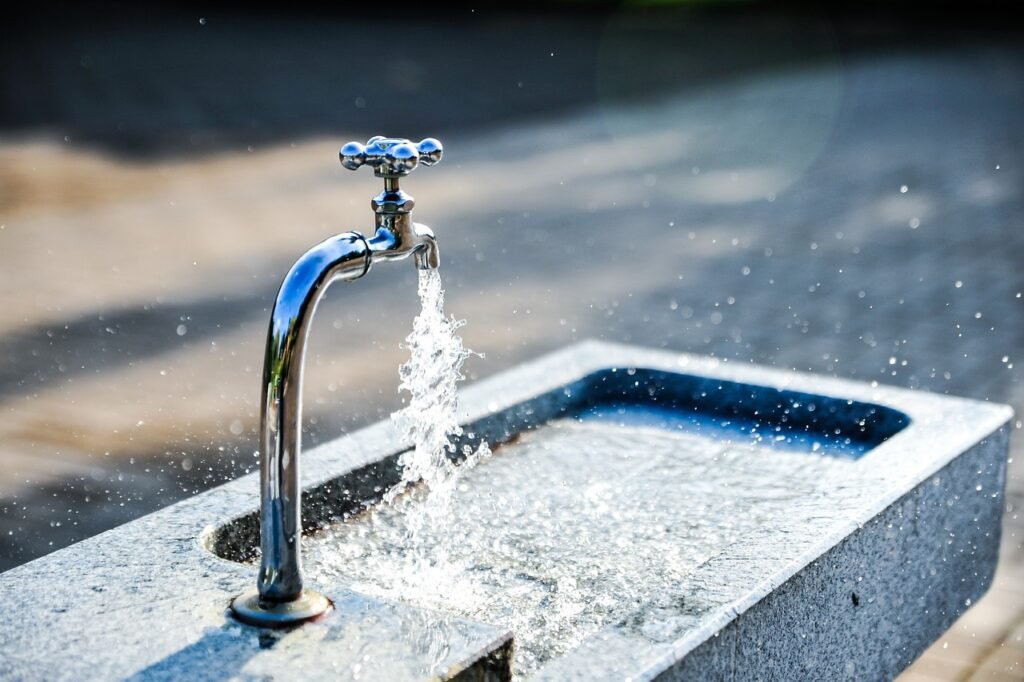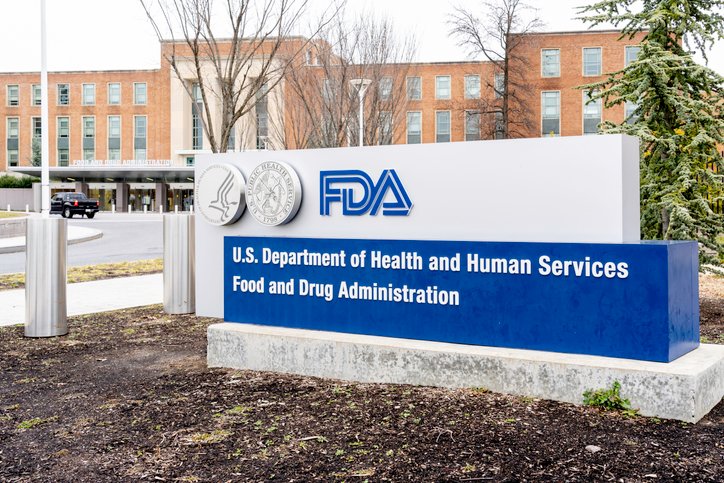
PFAS exposure has been associated with cancer, organ damage, and immune system issues, yet most treatment plants do not have the necessary technology to eliminate these substances.
Wastewater treatment plants channel ‘forever chemicals’ into waterways nationwide
by Anika Jane Beamer – Inside Climate News, Michigan Advance
July 2, 2025
This article originally appeared on Inside Climate News, a nonprofit, non-partisan news organization that covers climate, energy and the environment. Sign up for their newsletter here.
Harmful “forever chemicals” flow from wastewater treatment plants into surface water across the U.S., according to a new report by a clean-water advocacy group.
Weekslong sampling by the Waterkeeper Alliance both upstream and downstream of 22 wastewater treatment facilities in 19 states saw total per- and polyfluoroalkyl substances (PFAS) concentrations increase in 95 percent of tested waterways after receiving discharge from the facilities. Some of the waterways supply drinking water to nearby communities.
The study also found increased PFAS levels downstream of 80 percent of waterway-adjacent fields treated with “biosolids,” solid matter recovered from the sewage treatment process and spread on farmland as fertilizer.
Research on PFAS has linked the chemicals to multiple types of cancer, liver and kidney damage, reduced fertility, lower birth weights and endocrine system interference. Now, scientists suspect the chemicals can also impair immune system function, said toxicologist Linda Birnbaum, former director of the National Institute of Environmental Health Sciences and the National Toxicology Program, who was not involved in the new report.
The study is the second phase of Waterkeeper Alliance’s National PFAS Monitoring Initiative. Phase 1, conducted in 2022, revealed PFAS contamination in 83 percent of tested U.S. rivers, lakes and streams. That number rose to 98 percent of the sites included in the most recent study.
“PFAS pose one of the most urgent environmental and public health threats of our time,” Waterkeeper Alliance CEO Marc Yaggi said at a press briefing after the report’s release last week. PFAS from industrial sources flow through wastewater treatment plants and into waterways of ecological, cultural, recreational and public health significance, he said.
“These wastewater treatment plants are not designed to remove PFAS, and they face significant challenges managing this pollution, while accountability from industrial source polluters remains limited or nonexistent,” said Yaggi.
PFAS are a class of more than 9,000 man-made compounds designed to resist water, grease, heat and oil. Found in a wide range of consumer products, from clothing and nonstick cookware to cosmetics and fire retardant foam, PFAS are also released as industrial waste by the facilities that manufacture these goods.
Once in the environment, they do not break down, instead accumulating in water, soil and air. That’s how they got their unnerving “forever chemicals” name.
“It really doesn’t matter how you’re exposed to PFAS, whether you eat it, drink it, inhale it or even if some of it gets in through your skin,” Birnbaum said. “They’ll build up in us.”
While advanced treatment technology to remove PFAS from wastewater exists, most facilities do not have it. None of the 22 facilities included in the study employed PFAS removal technology, the Waterkeeper Alliance said.
The report’s findings underscore the need for stricter limits on PFAS discharges from industry sources, said Kelly Hunter Foster, the alliance’s senior attorney. Absent federal standards, restrictions on PFAS discharge are left to state or municipal authorities, she said.
The lack of Environmental Protection Agency guidance places an unfair burden on cities that lack both the technology to remove PFAS from treated water and the expertise to determine the acceptable level of any given chemical, said Hunter Foster.
The result is a regulatory free-for-all. All but one of the treatment facilities analyzed in the study process water from industrial users that have no restrictions on the concentration of PFAS in their wastewater.
In 2024, the EPA under the Biden administration set its first nationwide, enforceable limits on six PFAS compounds in drinking water.
Countless more PFAS chemicals may be harmful to humans and wildlife alike. “I don’t know that any of these chemicals are completely non-toxic,” said Birnbaum, the former federal toxicologist. PFAS left out of EPA regulation are less understood, not necessarily less dangerous, she added: “If you don’t look, you don’t know.”
And the new EPA rules are now slated to be pared back. The Trump administration said in May that it plans to delay enforcement of two of the Biden-era PFAS limits while rescinding the other four.
The Waterkeeper Alliance study identified as many as 14 different PFAS types in a single sampling site, and a total of 19 across the locations. Several of the compounds most commonly found at elevated levels downstream of treatment facilities in the study are not among those with EPA drinking water limits.
Currently, the EPA does not have any PFAS effluent limits or pretreatment standards, regulations that would restrain the ability of industry sources to discharge PFAS in the wastewater they send to treatment facilities.
“The lack of federal standards makes it impossible to keep the PFAS out of the system,” said Hunter Foster.
The new report includes policy recommendations calling for nationwide regulation of PFAS that treats the chemicals as a class, rather than individual substances, and the eventual phasing out of PFAS production and use.
A complete reduction in PFAS production is critical, Birnbaum argued. “Turn off the tap,” she said. “We’ve got to stop making these things.”
Michigan Advance is part of States Newsroom, a nonprofit news network supported by grants and a coalition of donors as a 501c(3) public charity. Michigan Advance maintains editorial independence. Contact Editor Jon King for questions: info@michiganadvance.com.
The study discovered that PFAS levels rose in 95% of the waterways tested downstream from treatment plants and agricultural sites utilizing sewage-based fertilizers. Advocates are urging for more stringent national regulations and a complete cessation of PFAS production.
- COUNTERTOP FILTRATION + PREMIUM-QUALITY CARAFE: No plumbing or installation is required for this RO system. Simply plug …
- POWER SAVING + WATER SAVING: The water system automatically enters a power-saving standby mode when not in use to reduce…
- 5-STAGE ADVANCED RO FILTRATION: Five levels of filtration, including a remineralization filter, are utilized to ensure t…
- Easy Installation – Easy to install with clear instructions and video. ICEPURE Under Sink Water Filter with super simple…
- Authoritative Certifications – ICEPURE Under Sink Water Filter System bears major Authoritative Certifications on market…
- Long Service Life – Tested by NSF/ANSI 42 for large filtration capacity of 22000 Gallons when used municipal water. 3x l…
- 120 Gallon Capacity. Aquagear lasts three times longer than most standard filters.
- Removes 20X more contaminants than a traditional pitcher. Third-party tested to filter lead, chlorine, microplastics, PF…
- Filter recycling included. Replacing your filter? Don’t forget to get your postage-paid label so you can recycle your us…
- WATER DISPENSER: One BPA-free, large 27-cup Brita UltraMax Elite Water Dispenser includes one Elite filter to help remov…
- IMPROVES WATER QUALITY: Brita water purifier dispenser cuts the taste and odor of chlorine from your drinking water
- CUTS OUT IMPURITIES: Brita’s 27-cup water filter system helps reduce 30 contaminants, including cadmium, mercury, asbest…
- 【Efficient filtration】The impressive 10” x 4.5” PP filter and GAC filter combination achieves a 5-stage filtration, effe…
- 【Longer lifespan】The GAC filter is expected to be changed every six months, while the PP filter is due for a change ever…
- 【Stable water flow】The whole house water filter system has passed 100,000+ water hammer tests to ensure the stable and s…
- [One-piece housing]: Hygienic one-piece housing, No-welding No-rust No-crack No-leak; Lead-free 304 stainless steel; Pro…
- [NSF/ANSI 42&53 & reduce heavy metals]: Filter element meets NSF/ANSI 42&53 standard; reduce heavy metals: 99.6% lead, c…
- [One-piece housing]: Hygienic one-piece housing, No-welding No-rust No-crack No-leak; Lead-free 304 stainless steel; Pro…
- Instantly Transform Tap Water Into Clean Extraordinary Water – Reduces up to 99% of 78 contaminants including chlorine, …
- High Flow Rate – This system powers through a half-gallon of water every minute. No need to wait for clean water compare…
- Cost Efficient & Long Lasting – The most economical filter on the market at less than 10 cents per gallon filtered. Last…










